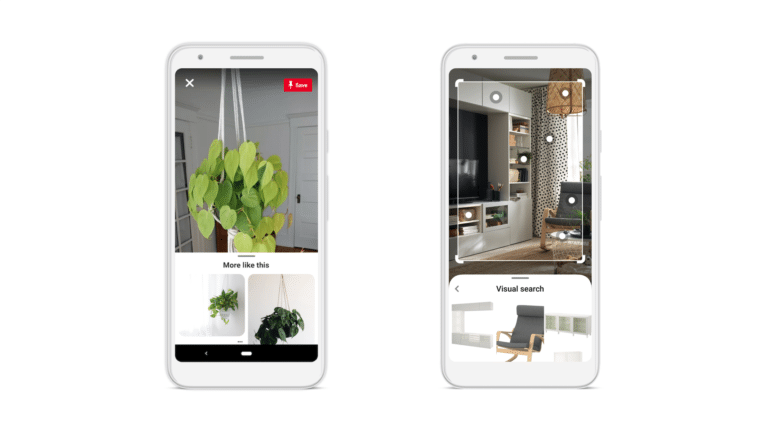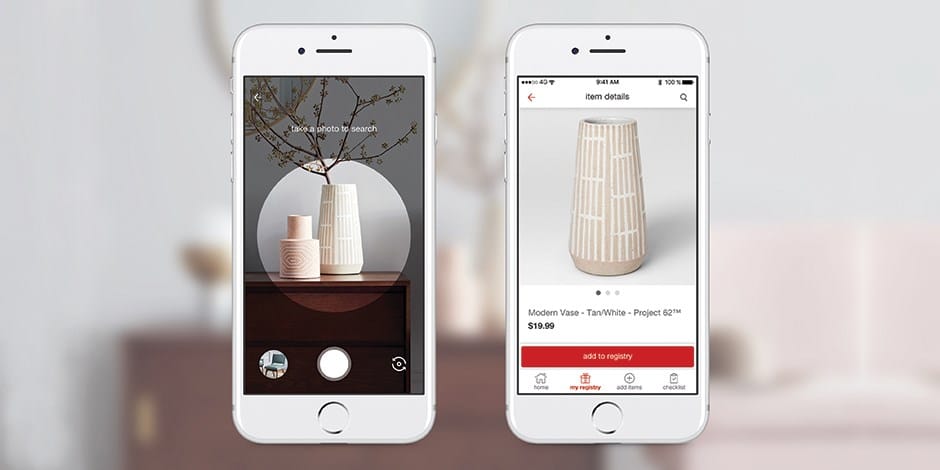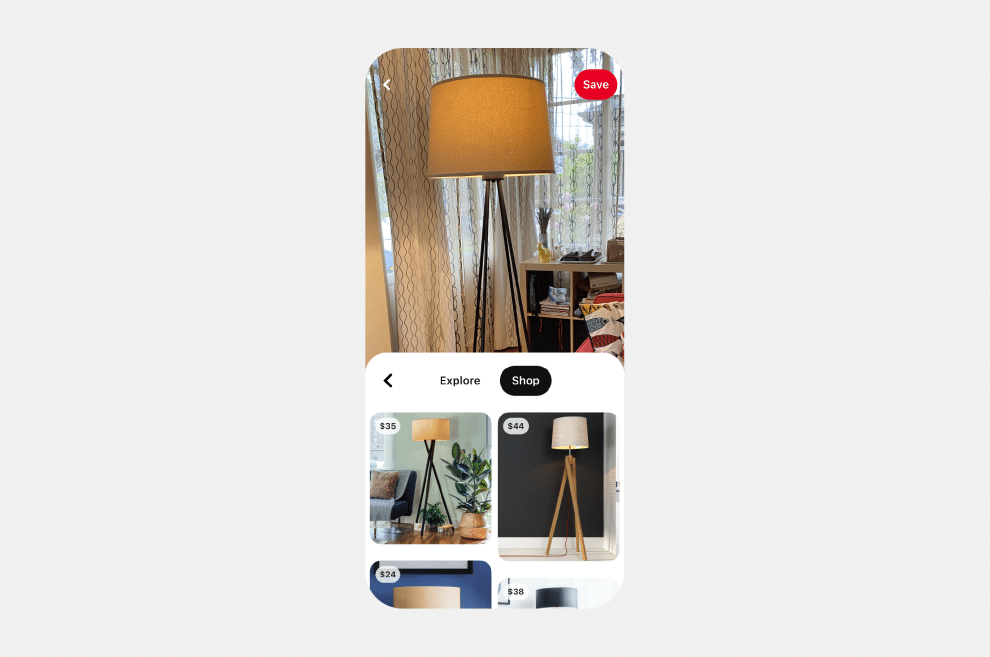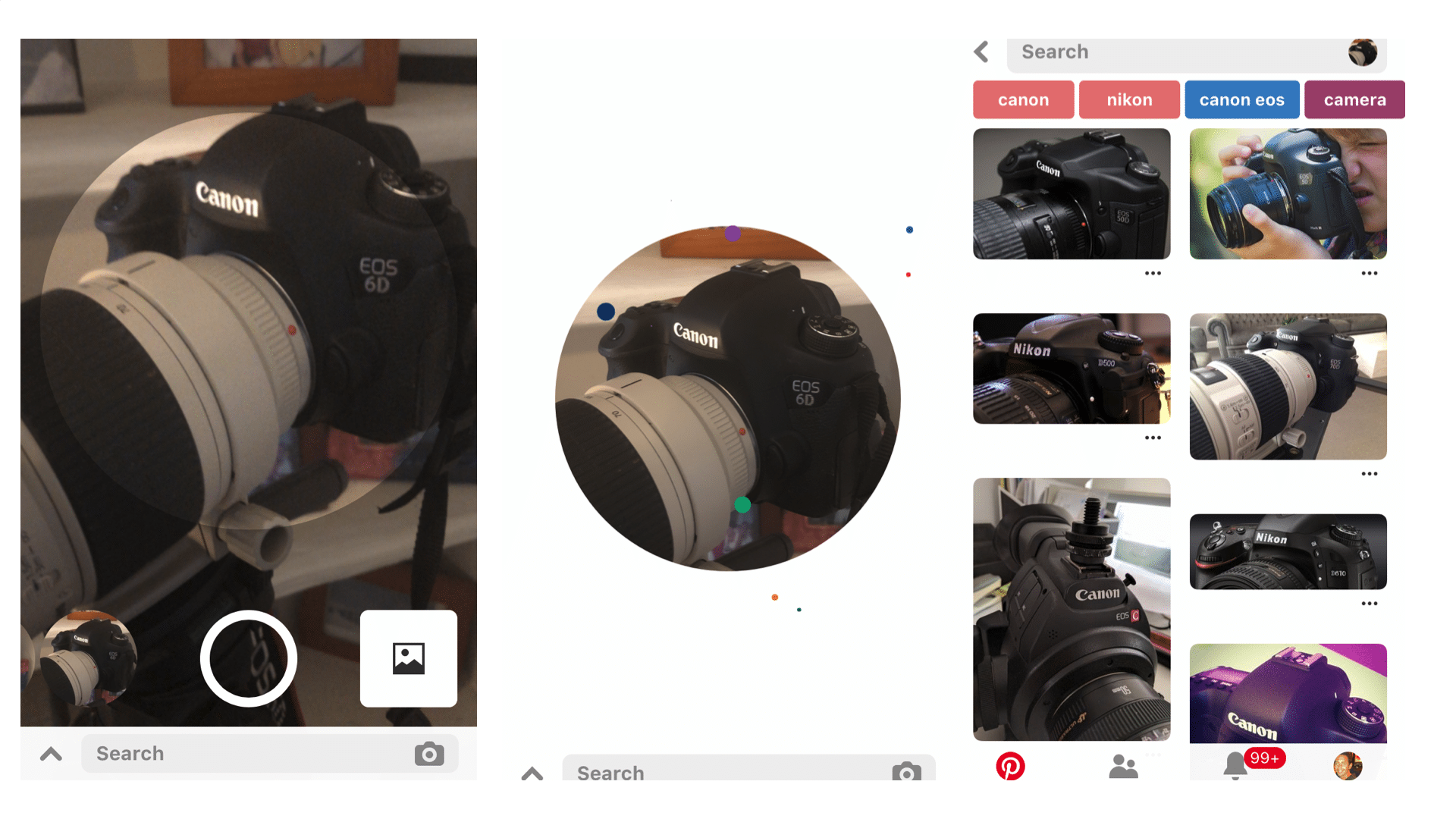
This post is adapted from ARtillery Intelligence’s report, Lessons From AR Revenue Leaders, Part III: The Field. It includes some of its data and takeaways. More can be previewed here and subscribe for the full report.
After Parts I (Snapchat) and II (Niantic) of this report series, we turn attention in Part III to the broader set of innovators emerging in today’s market. These are AR’s less proven, but still promising, next class. To make sense of the competitive field, we’ve divided into three parts.
Some companies are established players moving into AR (AR converts). Some are AR-native players building tools and technologies to advance the state of the art (AR enablers). And some are players just out of the gate and showing promise to represent AR’s next phase (AR hopefuls).
We’ll dive into the converts first. Picking up where we left off in examining Houzz’ AR ambitions, we’ll now dive into another noteworthy AR convert: Pinterest.

Search What You See
Product visualization, a la Houzz and Instagram, is just one flavor of AR that applies to commerce. Another is visual search. It utilizes computer vision and machine learning to identify items you point your phone at. To sidestep tech jargon and acronyms, Google calls it “search what you see.”
The utility inherent in such a tool makes it one of our top picks for potential killer apps. This aligns with our past analysis and ongoing data that AR will transition into mundane utilities that serve practical purposes at high frequency… sort of like what Google did with web search.
Speaking of Google, it’s the front runner for visual search. It has the knowledge graph, image database for object recognition, and other underlying tech that will carry over to a visual search world. More importantly, it’s highly motivated to make visual search happen, as we’ve examined.
But another player could vie for visual search market share: Pinterest. The publicly-traded media & commerce player is likewise positioned with an image database and AI chops. It has a narrower use case than Google — mostly around consumer products — but that aligns with monetization.
To validate this potential, it recently announced that Pinterest Lens — its visual search feature — recognizes 2.5 billion objects, mostly fashion or home-related. This notably beats Google Lens’ one billion products recognized. Though in fairness, Google announced that figure in 2018.

Commercial Intent
Beyond volume, Pinterest’s advantage goes back to its product focus. Google, being Google, will likewise monetize Google Lens’ “lean-forward” user intent to contextualize physical world items. That could be highly monetizable in fashion and local discovery. But it’s not there yet.
Instead, Google has focused its marketing for Google Lens on general interest visual searches like pets and flowers. This is to build broader organic demand by focusing on widely-familiar search subjects (a la “training wheels”). Monetization will come after user engagement hits critical mass.
But Pinterest is closer to that point with an inherent use case around product-based (monetizable) visual search. That likewise aligns with its product persona. A “search what you see” proposition for fashion items and home goods is a natural extension from everything Pinterest has built.
And it’s proving out with 3x annual visual search volume growth; and 80 percent of Pinners start with visual search when shopping vs. 58 percent of non-Pinners. This commanding share is notable because visual search hasn’t really acclimated yet as a common consumer behavior.
Back to Google, competitive advantage could conversely lie in underlying technology to surface the best results, and it’s hard to bet against Google there. Google Lens’s object recognition is built from Google’s machine learning, knowledge graph and training set from years of indexing images.
So Google and Pinterest’s respective visual search plays will co-exist for different use cases but also compete and overlap. Others will compete, such as Snapchat, which not only has a “camera-forward” AR user base, but has intelligently partnered with Amazon for visual search.

Competitive Edge
Another key competitive edge will be to make visual search easier to access. Google has taken steps to accelerate Lens by incubating it in its pervasive search products. And that’s needed, as there are still too many screen taps to launch a tool that isn’t proven enough to justify them.
As these things evolve, visual search could germinate AR killer apps. It not only moves beyond fun & games to achieve true utility (what AR needs), but it’s inherently a high-frequency use case. In that way, it follows patterns of mobile search — in both usage patterns and monetization potential.
Speaking of mobile search, one key factor is that proximity to search subjects (e.g. restaurant search when near the restaurant) can boost “intent” and key metrics like CTRs and CPCs. Visual search takes that proximity to another level, given that search subjects are literally in-view.
That’s amplified when visual search is used in commercial contexts such as store aisles. Pinterest, again, has an underlying commercial context to its engagement which makes it a sleeping giant in visual search. But Google’s gravitational pull and knowledge graph are formidable.
Whether it’s Pinterest, Google, Snapchat or others: visual search and AR in general need more business cases to counteract the broader market’s growing doubt. We’ll be watching as innovation, product positioning, and user behavior coalesce into revenue-generating AR products.
We’ll pause there and circle back in the next installment to continue looking at AR Converts, Enablers and Hopefuls. Meanwhile, check out the full report here.
